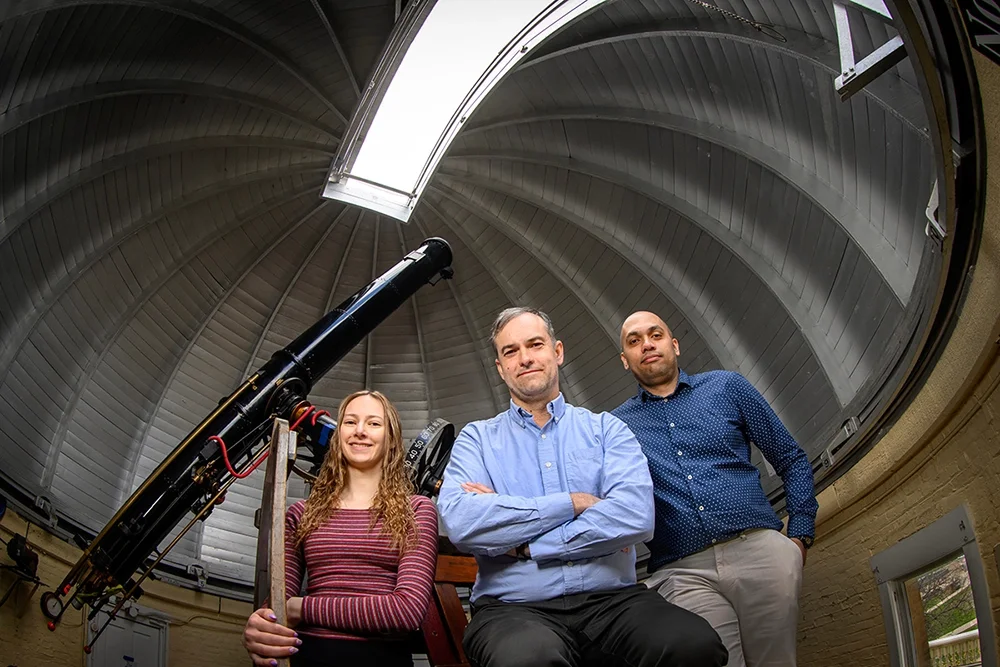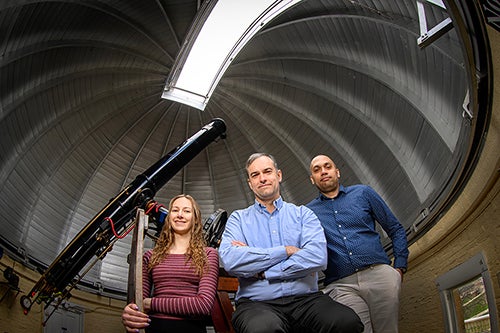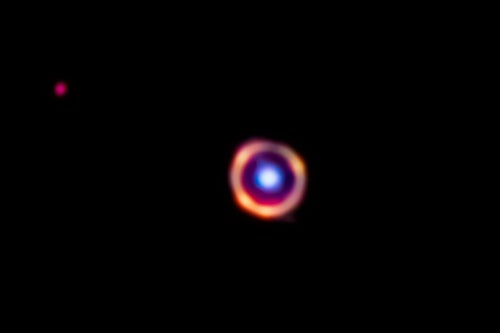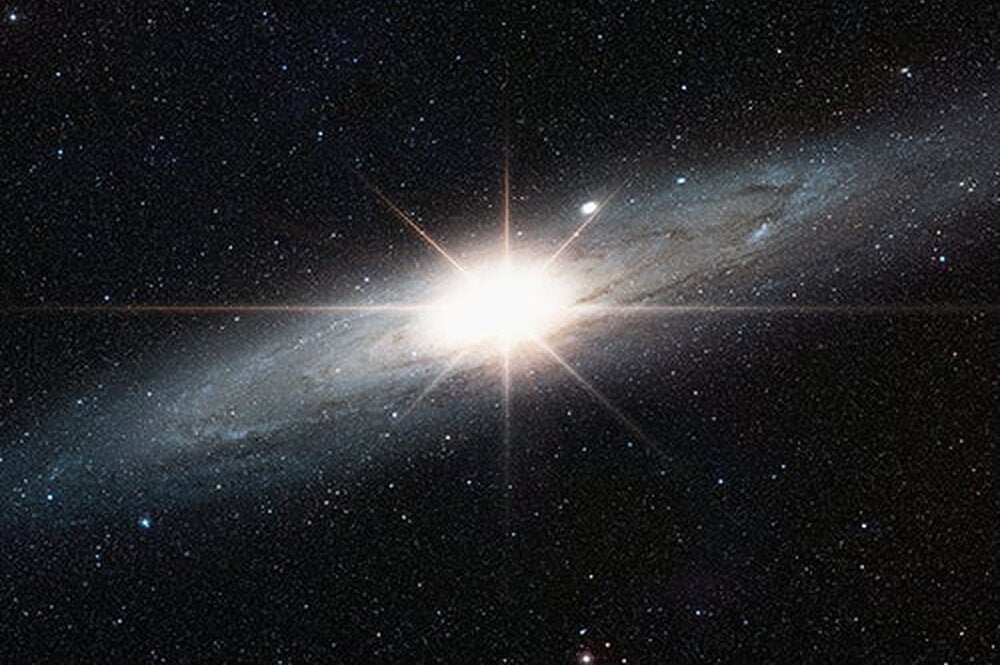

Researchers have detected complex organic molecules in a galaxy more than 12 billion light-years away from Earth – the most distant galaxy in which these molecules are now known to exist. Thanks to the capabilities of the recently launched James Webb Space Telescope and careful analyses from the research team, a new study lends critical insight into the complex chemical interactions that occur in the first galaxies in the early universe.
University of Illinois Urbana-Champaign astronomy and physics professor Joaquin Vieira and graduate student Kedar Phadke collaborated with researchers at Texas A&M University and an international team of scientists to differentiate between infrared signals generated by some of the more massive and larger dust grains in the galaxy and those of the newly observed hydrocarbon molecules.
The study findings are published in the journal Nature.
“This project started when I was in graduate school studying hard-to-detect, very distant galaxies obscured by dust,” Vieira said. “Dust grains absorb and re-emit about half of the stellar radiation produced in the universe, making infrared light from distant objects extremely faint or undetectable through ground-based telescopes.”

In the new study, the JWST received a boost from what the researchers call “nature’s magnifying glass” – a phenomenon called gravitational lensing. “This magnification happens when two galaxies are almost perfectly aligned from the Earth’s point of view, and light from the background galaxy is warped and magnified by the foreground galaxy into a ring-like shape, known as an Einstein ring,” Vieira said.
The team focused the JWST on SPT0418-47 – an object discovered using the National Science Foundation’s South Pole Telescope and previously identified as a dust-obscured galaxy magnified by a factor of about 30 to 35 by gravitational lensing. SPT0418-47 is 12 billion light-years from Earth, corresponding to a time when the universe was less than 1.5 billion years old, or about 10 percent of its current age, the researchers said.
“Before having access to the combined power of gravitational lensing and the JWST, we could neither see nor spatially resolve the actual background galaxy through all of the dust,” Vieira said.
Spectroscopic data from the JWST suggest that the obscured interstellar gas in SPT0418-47 is enriched in heavy elements, indicating that generations of stars have already lived and died. The specific compound the researchers detected is a type of molecule called polycyclic aromatic hydrocarbon, or PAH. On Earth, these molecules can be found in the exhaust produced by combustion engines or forest fires. Being comprised of carbon chains, these organic molecules are considered the basic building blocks for the earliest forms of life, the researchers said.
“What this research is telling us right now – and we are still learning – is that we can see all of the regions where these smaller dust grains are located – regions that we could never see before the JWST,” Phadke said. “The new spectroscopic data lets us observe the galaxy’s atomic and molecular composition, providing very important insights into the formation of galaxies, their lifecycle and how they evolve.”
“We didn’t expect this,” Vieira said. “Detecting these complex organic molecules at such a vast distance is game-changing regarding future observations. This work is just the first step, and we’re just now learning how to use it and learn its capabilities. We are very excited to see how this plays out.”
“It’s extremely cool that galaxies I discovered while writing my thesis would one day be observed by the JWST,” Vieira said. “I am grateful to the U.S. taxpayers, the NSF and NASA for funding and supporting both the SPT and the JWST. Without these instruments, this discovery could have never been made.”
Vieira also is the director of the Center for AstroPhysical Surveys, funded by the National Center for Supercomputing Applications at Illinois. Phadke is a CAPS graduate fellow.
The Space Telescope Science Institute operates the JWST under the management of the Association of Universities for Research in Astronomy, Inc., under NASA contract NAS 5-03127.


